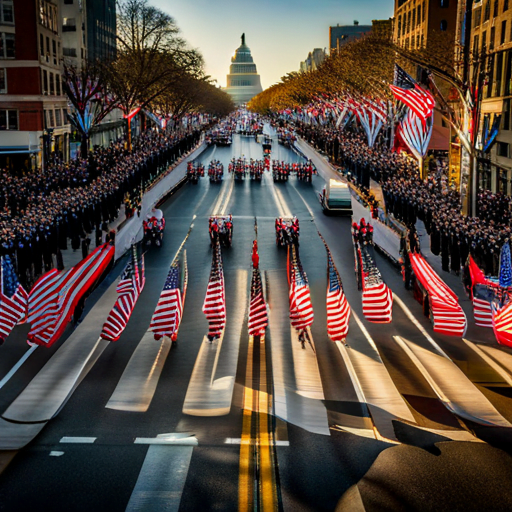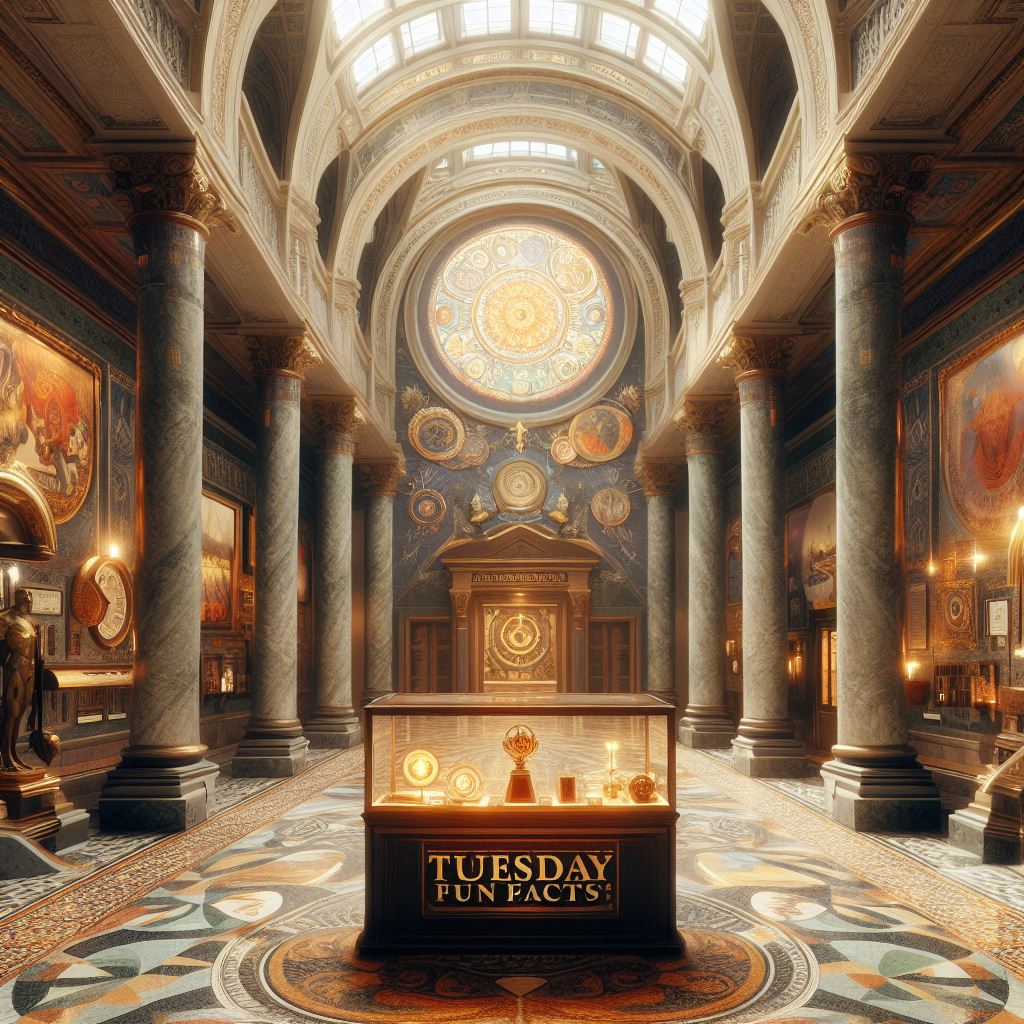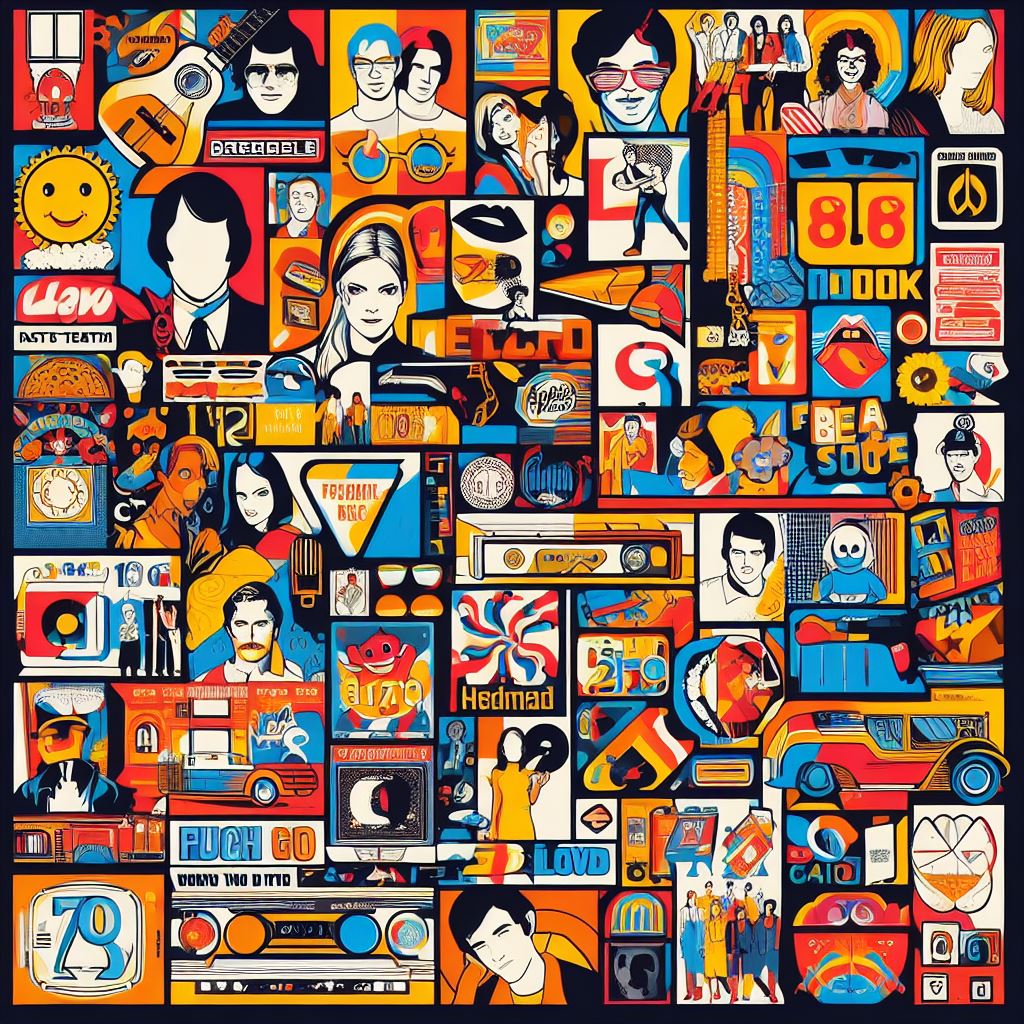For many Americans, Labor Day means enjoying a nice three-day weekend before the unofficial end of summer. But beyond the barbecues, sales events, and final vacations, Labor Day has a meaningful history and significance.
The holiday originated in the late 1800s amid pivotal labor unrest and activism. And while its observance today represents relaxation and time off work, Labor Day was established to honor the labor movement’s contributions.
Let’s liven up your Labor Day small talk and celebration trivia with this ultimate list of fun facts about the beloved holiday. Bone up on these interesting anecdotes about Labor Day’s origins, traditions, and impacts. You’ll have lots to chat about around the picnic table!
When Did Labor Day First Originate in the U.S.?
While Labor Day wasn’t designated a federal holiday until 1894, the very first Labor Day events were held in the 1880s.
Fun Fact: The earliest precursor to today’s holiday is believed to be a parade of 10,000 workers held in New York City on September 5, 1882. This early Labor Day event was organized by the Central Labor Union.
Trade and labor groups had been holding festivals since the early 1800s to celebrate workers. But many point to this 1882 march as the inspiration for the formal establishment of Labor Day years later.
Who Founded Labor Day as We Know It?
There are two key figures who have gone down in history as the founders of Labor Day.
- Peter J. McGuire – A prominent union leader, McGuire is often considered the “father of Labor Day.” He proposed the idea of Labor Day in 1882 and continued rallying for its adoption over the next decade.
- Matthew Maguire – Another influential union secretary, Maguire allegedly spearheaded the first Labor Day parade in New York discussed above. He is sometimes given credit for conceiving the holiday before McGuire’s involvement.
Fun Fact: To this day, there are disagreements among historians about whether McGuire or Maguire deserve recognition as Labor Day’s true founder.
How Did the Labor Movement Contribute to Labor Day’s Establishment?
The late 19th century was marked by significant labor unrest and strikes as workers fought back against poor conditions and treatment.
This labor activism provided the backdrop for Labor Day’s origins. The dire situation of workers helped spur the idea for a “workers’ holiday” to bring awareness to these issues.
Fun Fact: One pivotal strike was the Pullman railroad strike of 1894, occurring just days before Labor Day was declared a national holiday that year. This provided further demonstration of the need to formally recognize workers’ contributions and rights.
When Did Labor Day Officially Become a National Holiday?
While individual states began adopting Labor Day as a holiday in the late 1880s, it was not declared a federal holiday across the U.S. until 1894.
Fun Fact: On June 28, 1894, Congress passed an act making the first Monday of September a legal holiday in all U.S. states, territories, and the District of Columbia. With this act, Labor Day became the country’s first nationally recognized holiday celebrating workers.
This recognition came largely through the lobbying efforts of McGuire and union groups like the Knights of Labor. It marked an important milestone for the labor movement.
How Do Most Americans Celebrate Labor Day Today?
For many people, Labor Day equals festivities, family, and a farewell to summer. Some popular ways of observing the holiday include:
- Hosting barbecues, picnics, or other get-togethers with food and fun
- Relaxing with a day off of work to enjoy the long weekend
- Traveling to take one final summer vacation before the school year starts
- Enjoying Labor Day parades, festivals, and community events
- Taking advantage of big Labor Day sales for back-to-school items or other bargains
Fun Fact: Over 16 million hot dogs are consumed on Labor Day in the U.S., making it one of the biggest hot dog-eating days of the year!
What Is the Significance and Meaning Behind Labor Day?
At its heart, Labor Day is intended to honor the social and economic contributions of American workers. It’s meant to serve as:
- A tribute to the labor movement’s achievements like minimum wage and the 40-hour workweek.
- A show of appreciation and recognition for workers’ efforts to build and sustain the country with their labor.
- A reflection on the historical struggles faced by workers in fighting for better rights and protections.
Fun Fact: Labor Day pays homage to the American labor movement which brought us many worker benefits we often take for granted today like collective bargaining rights, occupational health and safety standards, and child labor laws.
While its observation has evolved over time, the holiday still signifies the solidarity, strength, and spirit of the labor community.
What Was the First Labor Day Parade in U.S. History?
As mentioned earlier, the very first Labor Day parade is believed to have been held in New York City on September 5, 1882.
Organized by the Central Labor Union, around 10,000 workers marched from City Hall up Broadway in lower Manhattan. The parade featured floats along with protesters calling for better working conditions.
Fun Fact: This 1882 parade later inspired Peter McGuire to co-found the first Labor Day. He attended the NYC event and saw an opportunity for a national holiday honoring laborers.
This inaugural Labor Day march set the stage for similar parades that would be held on the holiday across the country in the decades to follow.
Who Was Labor Leader Peter J. McGuire?
Peter J. McGuire was an activist and pioneer in the American labor movement of the late 1800s. Here are some key facts about his life:
- He co-founded the United Brotherhood of Carpenters and Joiners of America in 1881.
- He suggested the idea for Labor Day in 1882 after attending an early NYC parade.
- He continued rallying for official recognition of Labor Day throughout the 1880s and 1890s.
- He co-founded the American Federation of Labor (AFL) union federation in 1886.
Fun Fact: McGuire’s advocacy as a leader and organizer earned him the nicknames “Father of Labor Day” and the “Founder of May Day.”
His legacy demonstrates the great influence unions had in campaigning for Labor Day to become a national holiday.
How Did Early Labor Day Events Serve as Protests?
The earliest Labor Day gatherings in the 1880s often had a spirit of protest and activism.
With many workers lacking rights and facing stark conditions at the time, Labor Day represented a way to demand reforms.
Speeches condemned child labor practices
Parades included signs and banners advocating for reduced work hours
Fun Fact: In 1909, the first Labor Day in NYC featured 20,000 marchers calling for improved pay, safer workplaces, and other labor reforms.
So before the holiday’s recreational and festive spirit today, it had strong activist roots pushing for change.
What Are Some Quirky Labor Day Traditions?
Alongside barbecues and fireworks displays, Labor Day has spawned some quirkier traditions over the years as well:
- Having a “Labor Day Workout” to start exercising after a more sedentary summer
- Getting a Labor Day manicure to freshen up hands for fall
- Eating Labor Day brunch foods like waffles and cold salads
- Buying a new mattress on sale for a post-Labor Day bedroom refresh
Fun Fact: Indianapolis holds an annual Labor Day rubber duck race, with thousands of ducks dumped into the river to float past the cheering crowds.
How Has Labor Day Appeared in Pop Culture?
As a beloved American holiday, Labor Day has popped up across popular culture in some memorable ways:
- It’s featured in summer music like Nat King Cole’s “Autumn Leaves” and Green Day’s “Wake Me Up When September Ends”
- Many movies spotlight Labor Day, like Seven Years in Tibet and All About Steve
- An episode of The Office showed the characters celebrating with a Labor Day grill-out picnic
Fun Fact: An NFL tradition since the 1960s has been hosting the annual Cowboys vs. Giants football game on Labor Day primetime.
What Are Some Sayings and Punny Phrases About Labor Day?
Labor Day brings about some clever plays on words each year. A few examples include:
- “Thanks for your labor on this fine Labor Day!”
- “Don’t work too hard on your day off!”
- “Make Labor Day your relaxabor Day!”
- “You’re looking snazzy this Labor Dazy!”
Fun Fact: On Labor Day, Popsicles and ice pops are sometimes called “coolaborators.
These puns and more make for fun Labor Day captions and greetings.
How Many People Travel Over Labor Day Weekend?
Labor Day consistently sees millions of Americans hitting the road and taking to the skies. Here are some key stats:
- In 2022, over 33 million people travelled 50+ miles from home over Labor Day weekend.
- Of those, around 32 million travelled by car while another 3 million flew to their holiday destinations.
Fun Fact: AAA reported that the average distance traveled by car for Labor Day trips is around 250 miles.
All this travel makes Labor Day one of the busiest times of the year for vacationers and those visiting loved ones.
Which Foods See the Biggest Sales for Labor Day?
Certain foods take center stage on Labor Day dinner tables and cookouts. Top-selling items include:
- Over 750 million hot dogs are consumed on Labor Day.
- Potato salad is a staple, with around 180 million pounds eaten.
- Over 30 million pounds of chips are munched on.
- Ice cream sales total about $374 million as families enjoy cones, sundaes, and novelties.
Fun Fact: Beverage companies stock up for the holiday, producing around 360 million cans of beer and 6 million gallons of wine specially for Labor Day.
What Is “Blackout Wednesday” on Labor Day?
Blackout Wednesday refers to the big drinking night young adults often have on the Wednesday before Labor Day weekend. This evening of binge drinking gets its name from party-goers “blacking out.”
Key stats about this notorious night include:
- Around 75% of drinkers ages 21-34 admit to binge drinking on Blackout Wednesday.
- There is a huge spike in alcohol-related arrests, accidents, and hospital visits on this night across college towns and cities.
- Bars commonly hold special drink promotions and entertainment to draw in Blackout Wednesday crowds.
Fun Fact: Over 1 million revelers swarm the bars on Bourbon Street in New Orleans on Blackout Wednesday alone.
So while the holiday itself focuses on Labor Day parades and picnics, its eve brings an infamously wild night of drinking for young people across America.
Conclusion
Labor Day has a long and storied history since its 19th century origins as a tribute to workers and the labor movement. While you relax with your final summer activities this year, keep all these fascinating facts in mind about the holiday’s establishment, traditions, and celebrations.
Beyond your cookouts and beach days, remember the vital rights American laborers fought for that we now commemorate. Let the powerful legacy of Labor Day bolster your own appreciation for workers and workplace protections.
And most of all, engage with the holiday’s commemorative spirit however connects you most to honoring our nation’s workers while also enjoying well-deserved time off! By celebrating Labor Day, you follow in the footsteps of the brave men and women who dedicated their lives to uplifting us all.
FAQs
Labor Day is one of America’s most beloved end-of-summer holidays. But how much do you really know about its history, origins, and celebrations today? Read on for commonly asked questions to gain deeper insight into this historic holiday. Discover fun facts and trivia to wow your friends and family at the next backyard barbecue!
Q: When was Labor Day first celebrated in the U.S.?
A: While Labor Day wasn’t made an official national holiday until 1894, records show the country’s first Labor Day celebration was likely held on September 5, 1882. Organized by the Central Labor Union, it featured a parade of thousands of workers marching through New York City’s streets. This event was a precursor to the Labor Day holiday we observe now.
Q: Why is the first Monday in September chosen for Labor Day?
A: Congress deliberately chose the first Monday in September when passing the bill creating Labor Day in 1894. This strategic date allowed for a weekend celebrating laborers before the fall season began. The weather is still warm in early September, making outdoor festivities like parades and picnics more enjoyable around the country.
Q: Who originally founded Labor Day?
A: Two key figures in the labor movement of the late 1800s are considered founders of Labor Day. Peter J. McGuire proposed the idea in 1882 and rallied for its adoption. Matthew Maguire organized one of the first parades in NYC that sparked the holiday. Historians still debate which man deserves the most recognition as Labor Day’s true founder.
Q: How did the Pullman Strike contribute to Labor Day?
A: The violent Pullman railroad strike of 1894 raised further awareness of unfair labor practices shortly before Labor Day became a federal holiday. This unrest increased support for legally honoring the labor movement to prevent exploitative conditions for American workers in the future.
Q: Why do people eat hot dogs on Labor Day?
A: Hot dogs have become a staple food of Labor Day barbecues and picnics. People eat around 750 million hot dogs on Labor Day alone! Their classic, casual vibe suits the relaxed feel of Labor Day weekend, making hot dogs a fan favorite year after year. They also appeal to kids and adults alike.
Q: What time of day are Labor Day parades held?
A: Most Labor Day parades today are held in the mornings or early afternoons. An early start allows viewers to still enjoy other holiday afternoon activities. Some smaller evening parades are held too, allowing people to watch after work. Times range from 9am to 5pm in most cities, with larger parades often starting late morning.
Q: What percentage of Americans travel for Labor Day?
A: According to AAA, roughly 34 million Americans travel 50+ miles from home during the Labor Day weekend. With an estimated population just over 330 million, that means about 10% of all Americans travel for the holiday. These Labor Day getaway numbers have held steady pre-pandemic and as of 2022.
Q: Where was the largest Labor Day parade historically?
A: New York City’s annual Labor Day parades in the early 1900s boasted the most marchers in the country, often over 20,000 people. As the holiday’s founding location and a union stronghold, NYC hosted parades with huge turnout. That set the stage for major Labor Day parades in other cities later on.
Dig deeper into Labor Day’s rich history and modern traditions by checking out our holiday history blog content. Get more trivia, facts, recipes, and ways to celebrate Labor Day with our guides. Celebrate Labor Day as it was meant to be – honoring workers and reveling in community spirit!





